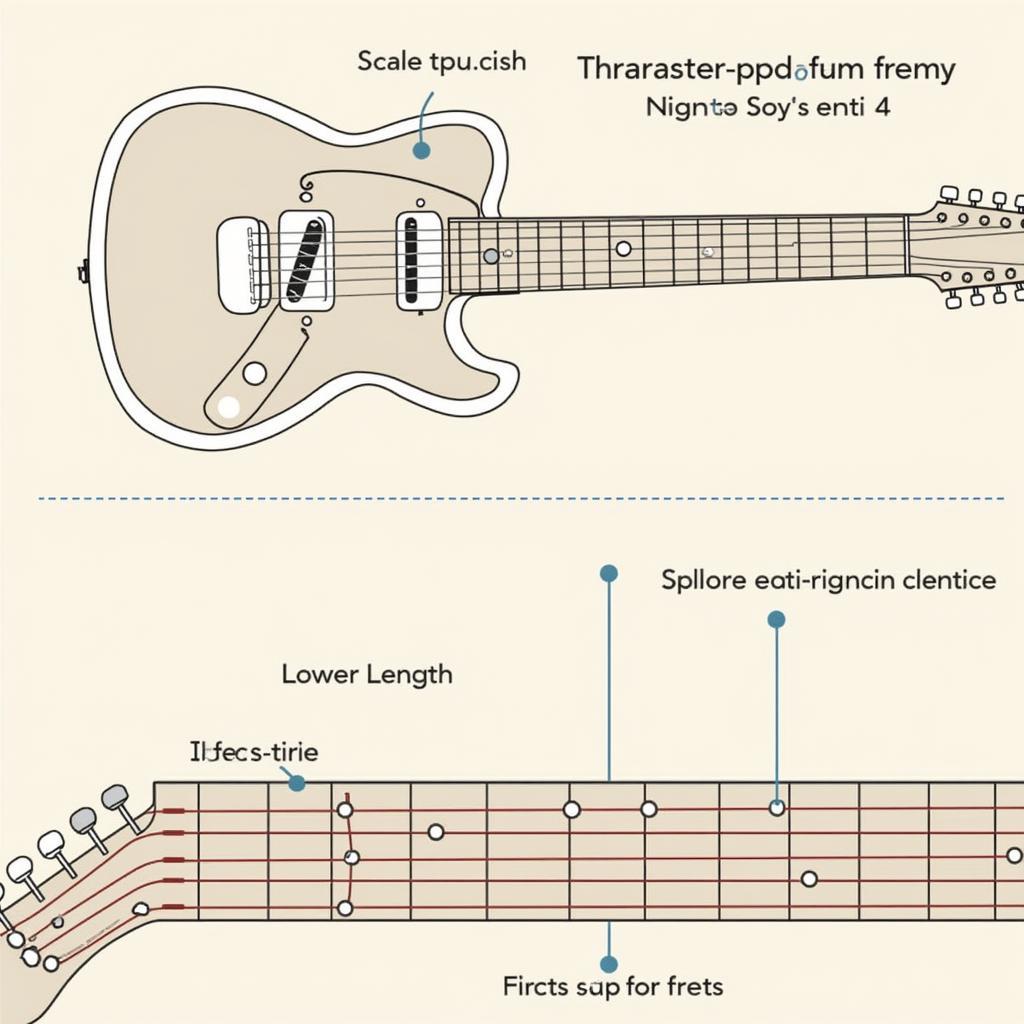Fanned Frets, also known as multi-scale frets, have become increasingly popular in recent years, particularly among bassists and extended-range guitarists. This unique fret design offers several advantages over traditional straight frets, improving playability, intonation, and tonal versatility.
What Are Fanned Frets?
 Diagram of fanned frets on a guitar
Diagram of fanned frets on a guitar
Instead of being perpendicular to the neck’s centerline like traditional frets, fanned frets are arranged in a diagonal or fan-like pattern. This design results in a longer scale length for the lower strings and a shorter scale length for the higher strings. The scale length, which is the vibrating length of the string, significantly affects the instrument’s intonation, string tension, and overall feel.
Benefits of Fanned Frets
Improved Intonation
One of the most significant advantages of fanned frets is improved intonation. With traditional frets, the equal spacing can lead to slight intonation discrepancies, particularly in the lower register. The longer scale length on the bass strings provided by fanned frets helps to correct these issues, resulting in a more in-tune and harmonious sound across the entire fretboard.
Enhanced Playability and Comfort
The ergonomic design of fanned frets contributes to a more comfortable playing experience, especially for players with smaller hands. The shorter scale length for the higher strings makes it easier to reach for chords and perform complex maneuvers, while the longer scale length on the lower strings provides a more natural feel for chording and riffing.
Greater Tonal Versatility
Fanned frets offer an expanded sonic palette for musicians. The balanced string tension across the fretboard contributes to a more even and consistent tone, with improved clarity and definition. The longer scale length on the bass strings enhances low-end response and articulation, while the shorter scale length on the treble strings provides a brighter and snappier attack.
Factors to Consider When Choosing a Fanned Fret Instrument
While fanned frets offer several benefits, it’s essential to consider a few factors before making a purchase:
- Scale Length Variation: Fanned fret instruments come with varying degrees of scale length difference between the lowest and highest strings. Consider your playing style and the desired tonal characteristics when choosing a specific model.
- Neck Profile and Width: The neck profile and width can significantly impact playing comfort. Explore different options to find an instrument that feels comfortable and natural in your hands.
- Personal Preference: Ultimately, the best way to determine if fanned frets are right for you is to try out different instruments and see what feels and sounds best.
Fanned Frets: A Growing Trend
The popularity of fanned frets continues to grow, with numerous manufacturers incorporating this innovative design into their guitars and basses. From extended-range instruments designed for heavy metal to acoustic guitars crafted for fingerstyle playing, fanned frets have proven their versatility across various musical genres.
Conclusion
Fanned frets represent a significant innovation in stringed instrument design, offering improved intonation, enhanced playability, and greater tonal versatility. Whether you’re a seasoned professional or just starting your musical journey, exploring the world of fanned frets can open up a world of sonic possibilities.

